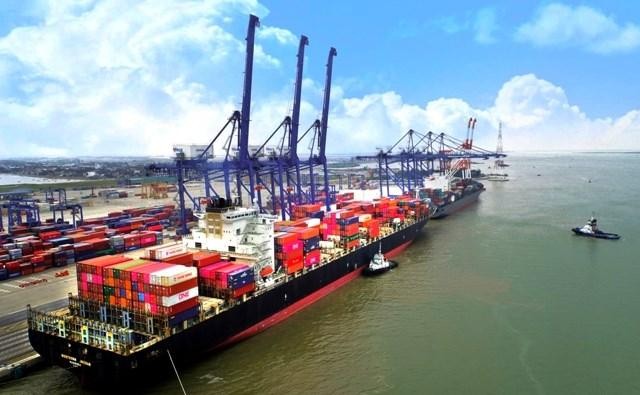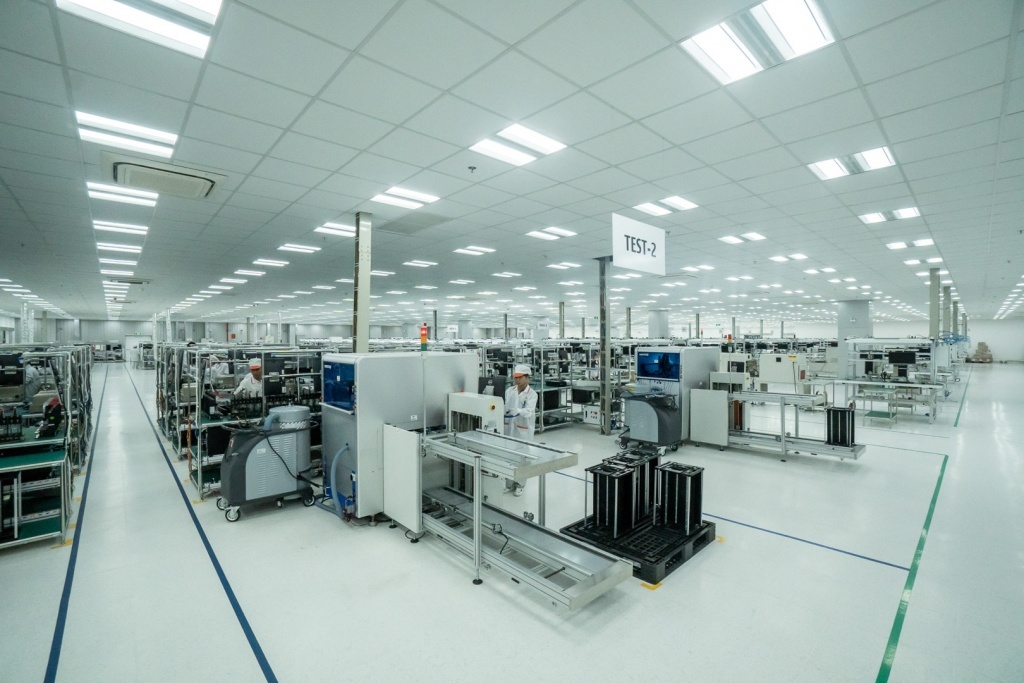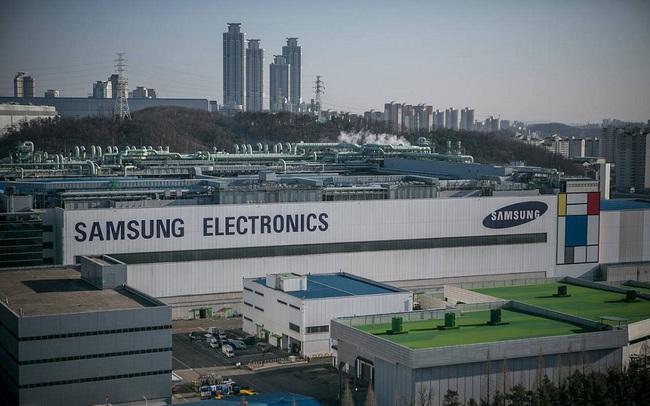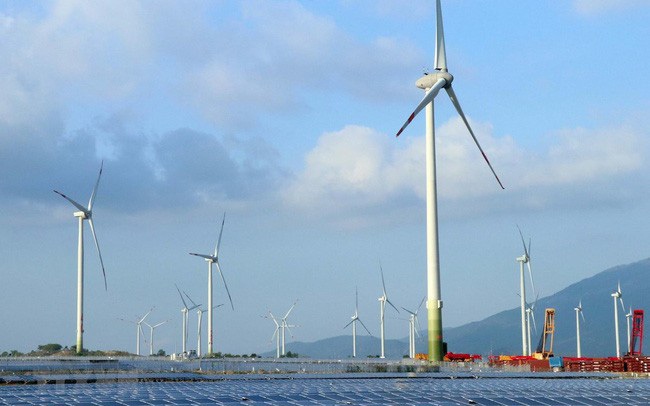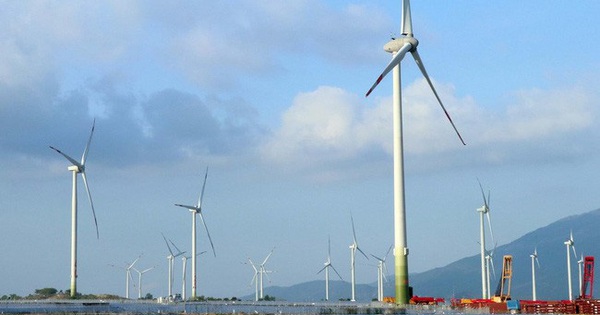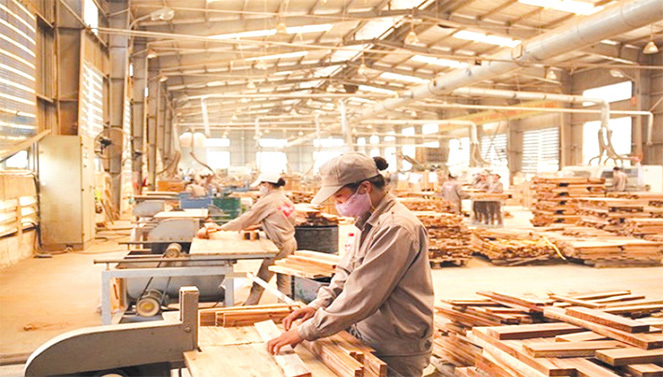The Prime Minister's visit brought many contracts up to 30 billion USD
07/11/2021 02:39 GMT+7
During his business trip to the UK and France, Prime Minister Pham Minh Chinh witnessed nearly 60 cooperation memorandums between Vietnamese enterprises and European countries with a total investment value of more than 30 billion USD.
Busy days of Prime Minister Pham Minh Chinh in Paris
Deputy Foreign Minister To Anh Dung shared with the press many impressive results from Prime Minister Pham Minh Chinh's working trips to Britain and France.
Open up many opportunities to strengthen cooperation with other countries
The COP 26 conference is one of the important contents of the Prime Minister's visit this time. So, can the Deputy Minister summarize the results as well as the significance of attending the COP26 Conference of the Vietnamese delegation led by Prime Minister Pham Minh Chinh?
The conference attracted the participation of nearly 200 member countries, including 120 heads of state and prime ministers and about 36,000 delegates. Therefore, the participation of Prime Minister Pham Minh Chinh and the Vietnamese delegation at the conference is of great significance and has achieved many practical results.
This is a specific high-level implementation of the policy and foreign policy of the 13th Party Congress on "continuing to promote and improve the efficiency of foreign affairs and international integration" and Directive 25 of the Party Congress. Secretariat on "Strengthening and Raising the Level of Multilateral External Relations to 2030".
By participating in the Conference, we have reaffirmed the strong message to all international friends about a responsible, proactive and active Vietnam in handling one of the common challenges. The biggest and most concerned global issue today is climate change. Thereby demonstrating the foreign policy of independence, self-reliance, diversification and multilateralisation, and being an active and responsible member of the international community.
The Prime Minister's visit brought many contracts up to 30 billion USD
Prime Minister Pham Minh Chinh meets US President Joe Biden on the sidelines of COP26
Through active and active participation with the profound messages expressed in the speeches of Prime Minister Pham Minh Chinh at the conference, especially the commitment related to achieving net emissions of "zero" by By 2050, by joining the commitment to reduce global methane emissions and the Glasgow Declaration of Forest and Land Use Leaders, the international community has more clearly seen Vietnam's policy, determination, efforts and political commitment. South in response to climate change.
During the bilateral contact on the occasion of the conference, the leaders of the countries shared the serious impacts of climate change as well as the difficulties and challenges we are facing. Leaders of other countries also consider Vietnam as a model of a developing country that still faces many difficulties but has made leading contributions to climate change response.
The Prime Minister's proposals are welcomed and supported by all countries. This opens up many opportunities for us to strengthen cooperation with other countries and partners in finance, technology transfer and capacity building to support our efforts to respond to climate change. .
On the occasion of attending COP26, the Prime Minister and the Vietnamese delegation had more than 20 meetings and bilateral contacts with senior leaders of countries on all continents, including strategic partners, major partners and partners. leaders of international financial institutions, new energy, environment...
Thereby promoting cooperation between Vietnam and partners, deepening and effective cooperation relations, actively contributing to consolidating a solid and favorable external situation to maintain peace and stability. and develop the country.
This is also an opportunity for us to deploy vaccine diplomacy, health diplomacy, mobilize resources including finance and technology, actively contribute to the prevention of Covid-19 epidemic and recovery and development. socio-economic development.
So what are the results of vaccine diplomacy and medical cooperation through this trip, sir?
Other countries shared Vietnam's difficulties and responded positively to our request. Specifically, France announced an additional aid of nearly 1.4 million doses of anti-Covid-19 vaccines through bilateral channels and the COVAX mechanism, bringing the total number of doses of vaccines France supported to Vietnam to more than 2 million doses.
He affirmed that he will help Vietnam improve its medical capacity and transfer Covid-19 vaccine production technology.
The Prime Minister's visit brought many contracts up to 30 billion USD
Prime Minister Pham Minh Chinh witnessed the signing ceremony of cooperation agreements between AstraZeneca and Vietnamese partners
The domestic company and AstraZeneca Company signed a contract to buy 25 million doses, bringing the total number of agreements to more than 55 million doses and committed in November and December 2021 all vaccines will be brought to Vietnam, in time. to quickly implement the Government's goal of universal vaccination.
Countries attach importance to Vietnam's role and position
What are the outstanding results of the Prime Minister's bilateral activities in the UK and the official visit to France by the Prime Minister, Deputy Minister?
Britain and France are both big countries in the world, a permanent member of the United Nations Security Council, a member of the G-7 Group and a strategic partner of Vietnam. France will assume the role of rotating EU Chair in the first half of 2022. Both countries are adjusting their policies towards the Asia-Pacific region, in which ASEAN and Vietnam are attached. In that context, the working visit to the UK and the official visit to France achieved many important goals, substantive results and strategic significance.
Both countries gave the Prime Minister and delegation a very respectful and warm welcome. Despite having to focus highly for the COP26 Conference, welcoming hundreds of heads of state, both the Royal Family and the British Government attach great importance to Vietnam's participation.
Prime Minister Boris Johnson, Prince Charles, Prime Ministers of Scotland, Wales and Northern Ireland" all took time, including holidays to meet and interact with the Prime Minister. In Vietnam, the rituals are more than usual, respectful and very friendly: both the President and Prime Minister hold talks and solemn receptions, the President of the National Assembly and the President of the Senate have a meeting with our Prime Minister.
France gives Prime Minister Pham Minh Chinh and the Vietnamese delegation official ceremonies, more than usual
During talks and meetings, leaders of countries expressed their importance to Vietnam's role and position, agreed on major orientations, and assigned ministries and branches to implement specific cooperation measures to increase strengthen strategic trust, determined to bring cooperation frameworks with Vietnam in all fields to further deepen, substantive and effective.
Discussing multilateral issues, the leaders of Britain and France shared and supported Vietnam in international issues such as climate change response, security and safety, freedom of navigation and aviation on the basis of respect for the law. international law, including the 1982 United Nations Convention on the Law of the Sea (UNCLOS).
Can you give some specific numbers from the Prime Minister's trip?
The impressive results of trade and investment promotion activities during the trip were that, with the witness of the Prime Minister, nearly 60 cooperation memorandums were agreed upon by Vietnamese enterprises and other countries, with a total investment value of about 60 million USD. The investment is committed to more than 30 billion USD, focusing on the fields of renewable energy, digital economy, digital transformation, environment, infrastructure development, planning, aerospace industry, medicine. economy and epidemic prevention, education, agriculture, tourism... are priority orientations to attract investment of Vietnam.
The Prime Minister's visit brought many contracts up to 30 billion USD
The Prime Minister witnessed the signing of an agreement on the implementation of the contract for 119 aircraft
Nearly 450 leading businesses from the UK, France and Europe who attended in person and online 2 business forums in the UK and France expressed their encouragement by the Prime Minister's message that Vietnam has moved to the stage of adaptation. Safe, flexible, effective disease control, accompanying and creating all favorable conditions for businesses to feel secure to invest and do long-term business in Vietnam.
In addition, the Prime Minister had nearly 40 meetings and exchanges with more than 60 leaders of leading corporations, banks and universities in the UK, France and Europe. Leaders of the Ministries of Planning and Investment, Industry and Trade, Agriculture and Rural Development, Information and Communication, Natural Resources and Environment, and Health also worked separately with about 50 corporations and large enterprises. to discuss specific investment projects and cooperation directions in the near future.
<p>Trong chuyến công tác tại Anh và Pháp, Thủ tướng Phạm Minh Chính đã chứng kiến gần 60 bản ghi nhớ hợp tác giữa DN Việt Nam và các nước châu Âu với tổng giá trị đầu tư hơn 30 tỷ USD.</p>

vietnamnet.vn

















